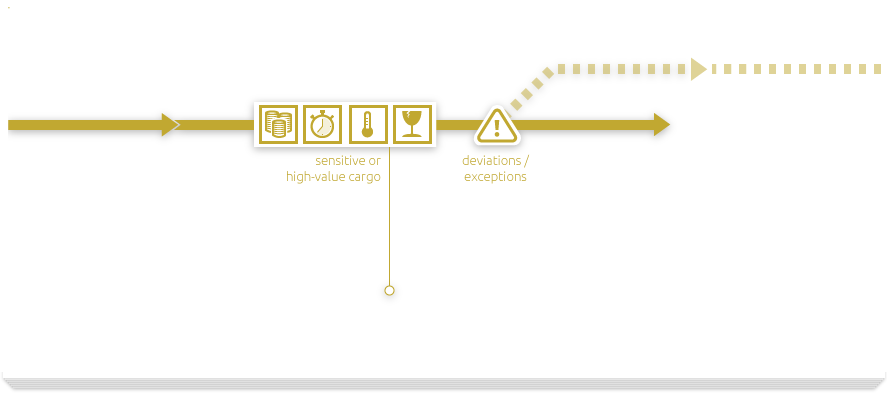Creating a global data environment to strengthen situational awareness about containerised ocean freight, improve operational control and enhance general service levels.
Awareness: DHL Global Forwarding uses a proprietary Visibility Platform to improve in-transit control of sensitive shipments, including interaction with customs and contractors. Sensitive cargo demands closer attention, supported by improved transparency and information throughout its journey. DHL identified three persistent challenges in this regard:
1. The “Black Box” effect. Without true awareness throughout the global supply chain, it is difficult to accurately predict when shipments will arrive, especially if delays occur en route. DHL wanted more accurate forecasting and timelier reporting of deviations to allow decisions on initiating responsive actions to be made earlier.
2. Disconnected data. There are many proprietary container-tracking mechanisms, each with its own interface. Each data source in the supply chain informs DHL
about isolated events (like a container or vessel position); a mechanism was needed to integrate these disparate sources into a holistic view of the respective operational situation.
3. Inconsistent data. Multiple data sources sometimes provide contradictory or incomplete information, and the resulting uncertainty has implications for operational costs and service quality. DHL needed the Visibility Platform to bring these data together in a consistent and coherent way, helping operational staff to understand them at a glance.
COMCIS worked with DHL to create a system that could merge data from multiple sources, deliver situational awareness throughout the whole supply chain, and generally raise the level of sophistication in ocean freight shipping practices.
Results:
Raising the predictability of ocean freight logistics.
Collaboration: Connecting data sources to improve awareness throughout the digital global supply chain.

DHL already had a strong container-monitoring program, but wanted to further improve its ability to identify and react to deviations and other exceptions along the supply chain, especially when transporting sensitive, high-value cargo like pharmaceuticals or electronics.
COMCIS aims to improve the accuracy and efficiency of DHL’s monitoring framework by combining services to bring together sets of raw data from multiple, previously isolated sources into a single window. This consists of three distinct parts:
Data source aggregation. Data are sourced from container monitoring devices, Automatic Identification Systems (AIS) for vessels, ocean carrier websites, dedicated links with ocean carriers, cargo summary data and real-time terminal milestones.
Consolidating data into relevant information. By translating and subsequently interpreting, matching, comparing, and validating raw data, COMCIS creates useful intelligence – earlier and more reliably – that customers, logistics service providers and customs authorities can use to make better decisions.
Information delivery. Users are presented with a dashboard that allows them to drill-down into details and issues, which gives them a holistic view on shipments throughout the supply chain and helps them forecast delivery times and assess uncertainties – all independently of the specific set of data sources used.
These services are added as a thin layer on top of existing data exchange systems, creating an integrated logistics overview across the whole supply chain.
Opportunity: A quick, easy route to more intelligent visibility. With a single common interface interpreting data from container monitoring devices and/or other sources, DHL will improve its ability to remotely attend sensitive ocean freight shipments all the way from origin to destination. For example, exceptions can be identified and treated more comprehensively, customers can be proactively advised about changes, collaboration with carriers and terminals is facilitated, and cargoes may be cleared faster through customs. These capabilities enable DHL to respond
to growing requests for qualified ocean freight services from shippers of sensitive goods. In the long term, financial benefits could also result from reduced pipeline and contingency stocks. As reliability is expected to improve steadily, working capital requirements might also be gradually reduced. Synergies like this are at the heart of the COMCIS project. They can succeed especially where individual shippers and forwarders would struggle to make comprehensive use of prospective data sources, or to secure buy-in from other parties.
